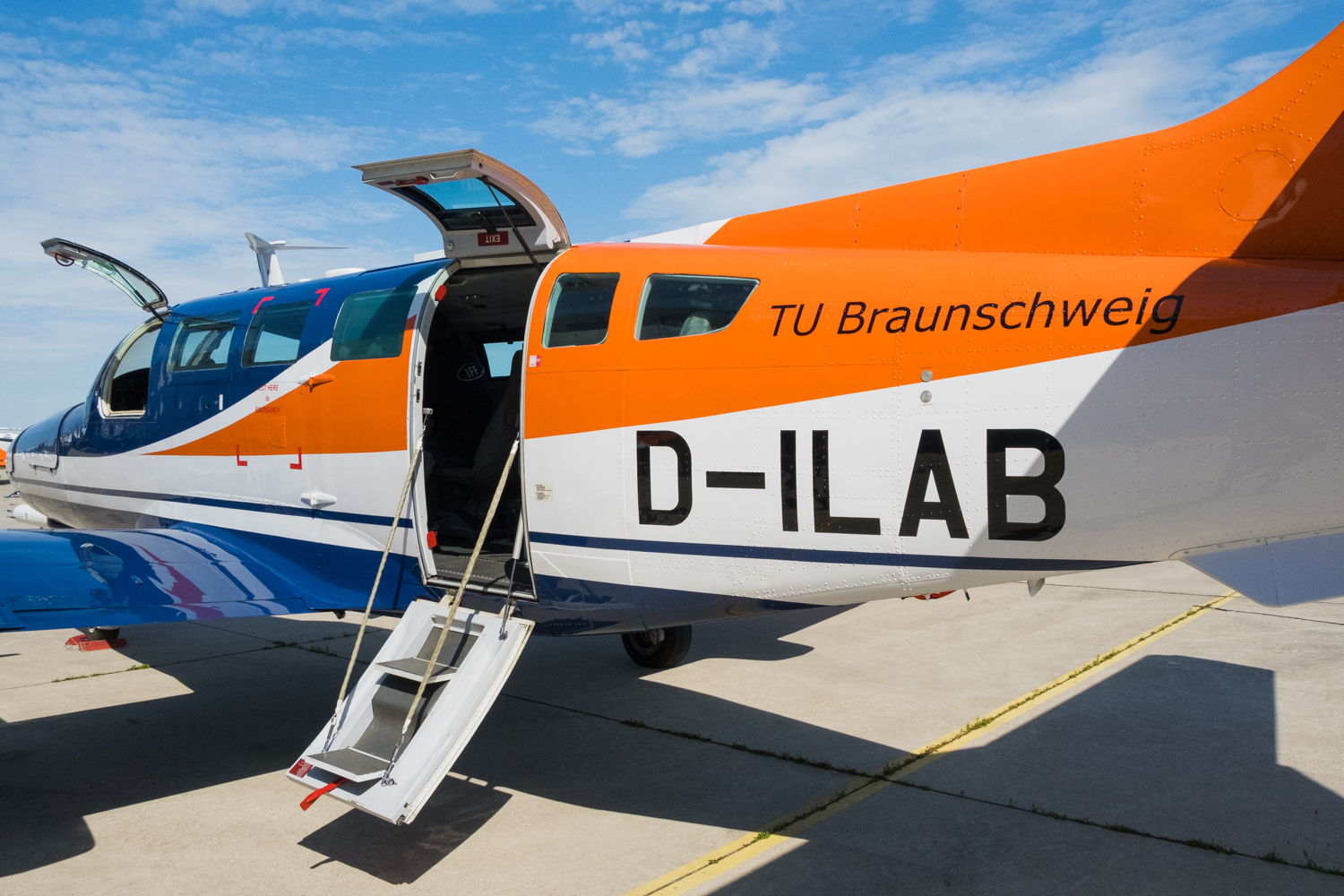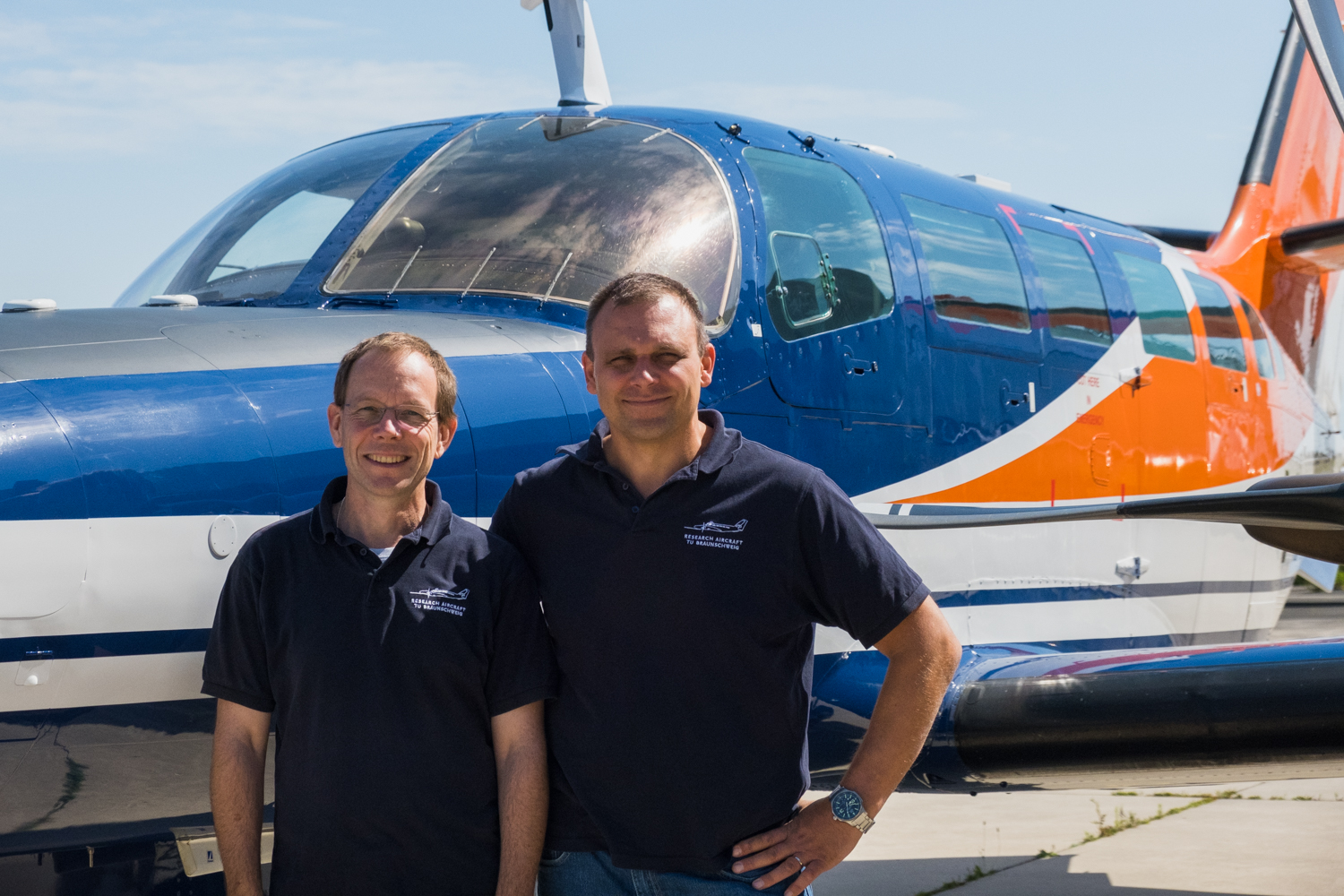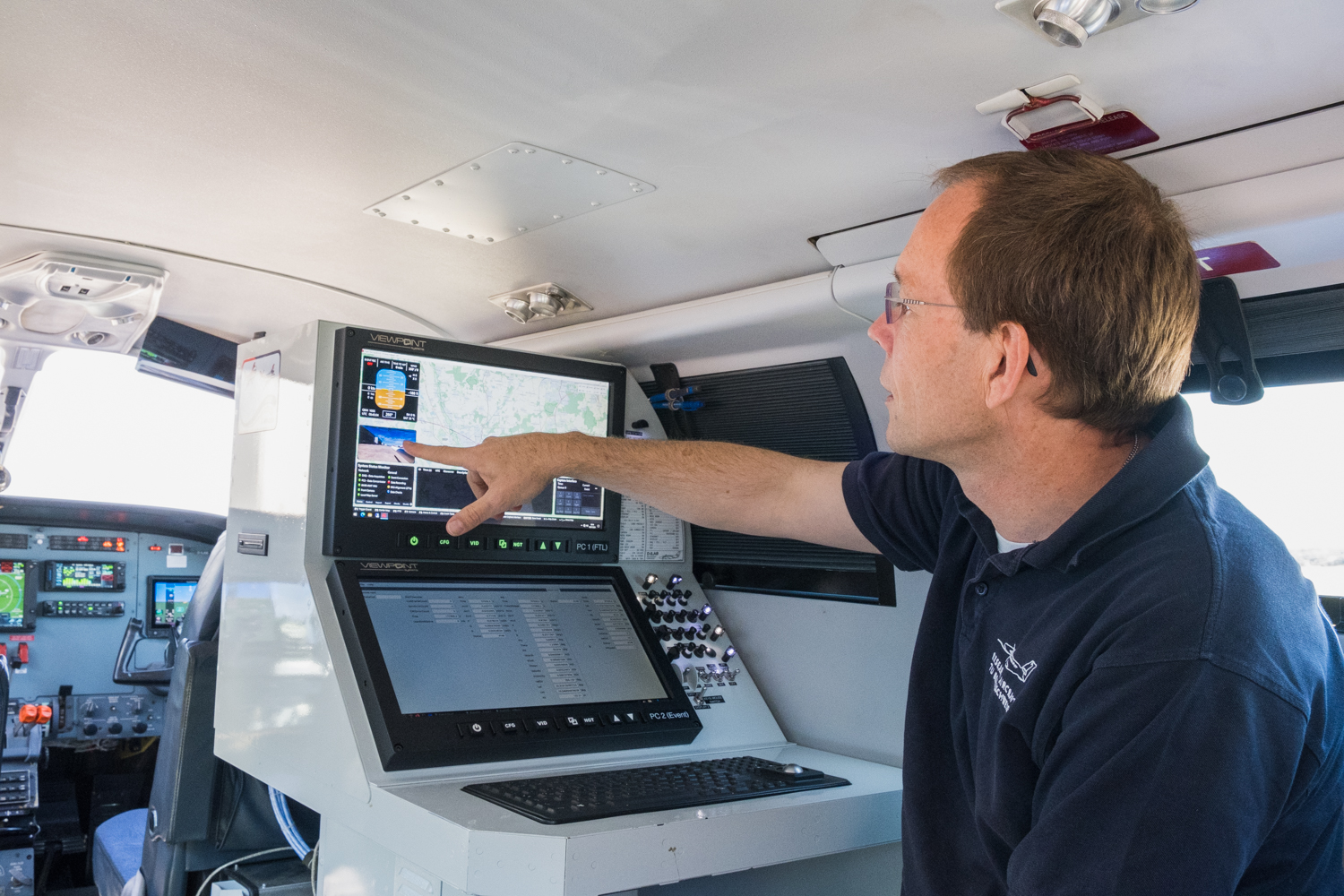Research in the slipstream for a successful energy transition Review: TU's research aircraft for wind wake measurement in the USA from any location
A team from TU Braunschweig is contributing important measurement results to an international research collaboration in the USA, made possible by the Klaus Tschira Foundation.
Wind energy is a cornerstone of the energy transition. This can only be achieved with cutting-edge research into the effects of ever larger wind farms. For this reason, a team from the Institute of Flight Guidance at Technische Universität Braunschweig (TU Braunschweig) flew to the USA in their unique research aircraft to take part in the international AWAKEN measurement campaign in the Great Plains of Oklahoma. There they studied the wakes of wind farms – in other words, how the wind dynamically behaves directly behind such wind farms. The Klaus Tschira Foundation made it possible for them to take part in the measurement campaign, as well as to purchase and equip the aircraft in 2019.

With its extensive technical equipment, the “D-ILAB” research aircraft at TU Braunschweig is unique in a university context. Photo credit: Kevin P. Hoffmann/Klaus Tschira Foundation
AWAKEN (American Wake Experiment) brought together research institutes, universities and wind industry companies from around the world to study the wakes of wind farms in the Great Plains. More than 100 researchers collected and analysed atmospheric data and used it to develop realistic models. They analysed the wind field at different scales, from the flow around individual turbines to the effects 100 km away, taking into account terrain and vegetation. The year-long measurement campaign will help to better understand the processes in and around wind farms and thus increase their efficiency. “A wind farm extracts energy from the wind, which initially slows down in its wake,” explains Astrid Lampert. Astrid Lampert, who has a doctorate in Physics, is head of the Airborne Meteorology and Measurement Technology working group at the Institute of Flight Guidance. The distance after which the wind speed recovers depends, among other things, on the atmosphere. “It can take 500 metres, but also up to 100 kilometres,” explains Lampert. This is therefore an important factor when planning wind farms to maximise yields.
“We heard about the AWAKEN measurement campaign and wanted to get involved,” says Lampert. However, the search for funding proved difficult. In the end, funding from the Klaus Tschira Foundation was the only way to complete the project in time.
Research across the Atlantic
The five-person team from Braunschweig spent almost six weeks in the USA. Thanks to their research aircraft, a Cessna F406, they were the only ones able to take measurements from anywhere, while other teams had to rely on stationary measurement systems. “We were very flexible and could also adapt to the wind direction,” explains Lampert. When the wind direction changes, the wakes drift in a different direction, past the stationary measurement equipment.
Thomas Feuerle and Maik Angermann flew the aircraft with Matthias Cremer. They crossed the Atlantic with stopovers in Scotland, Iceland, Greenland and Canada. Preparations for the trip, which included theoretical training, took about a year. “You hear the most adventurous stories about what can happen, especially with the weather,” says Angermann, who is responsible for all technical aspects of the aircraft. Another crew, for example, had to wait two days in Canada for better weather before continuing their journey to Greenland. In the case of the Braunschweig crew, the weather and technology worked perfectly and they only needed four days instead of the planned seven.
What makes the Braunschweig research aircraft so special? “The point is that we want to fly slowly and low,” explains Lampert. A slower flight speed means more measuring points for the same distance. The acquisition of the aircraft was made possible by the Klaus Tschira Foundation in 2019.

Thomas Feuerle (left) and Maik Angermann (right) flew the D-ILAB research aircraft across the Atlantic with another colleague. Photo credit: Kevin P. Hoffmann/Klaus Tschira Foundation
The atmosphere determines how we generate energy
The experiments show how important the stability of the atmospheric layers is. Warm air rises, while cold air sinks to the ground. “If there is already warm air at the top and cold air at the bottom, the air layers hardly mix at altitude and therefore remain stable,” explains Astrid Lampert. This lack of turbulence means that wakes form particularly well. For this reason, the team from Braunschweig started their measurement flights in the Great Plains in the early hours of the morning. “Just four or five hours after sunrise, the atmosphere was so turbulent that we were unable to measure any wakes,” says Feuerle.
The importance of wakes is demonstrated by the results of earlier measurements over the North Sea. They now serve as an important reference for planning offshore wind farms worldwide. The team hopes to achieve a similar result with the AWAKEN measurements, and is making the processed data available to the public. There are still many questions to be answered. It is expected that the project team will shed much more light on the subject.

Thomas Feuerle explains the aircraft’s measurement systems. The measurements are monitored and controlled live on a screen. Photo credit: Kevin P. Hoffmann/Klaus Tschira Foundation
Author: Kevin Pierre Hoffmann, kevin.hoffmann@klaus-tschira-stiftung.de
